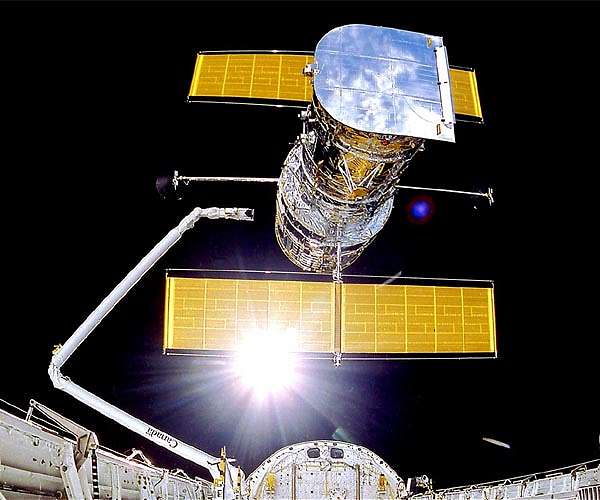
NASA, SpaceX study boosting Hubble to extend its lifespan (Image Credit: Space Daily)
NASA and SpaceX have agreed to study the feasibility of awarding Elon Musk’s company a contract to boost the Hubble Space Telescope to a higher orbit, with a goal of extending its lifespan, the US space agency said Thursday.
The renowned observatory has been operating since 1990 about 335 miles (540 kilometers) above Earth, in an orbit that slowly decays over time.
Hubble has no on-board propulsion to combat the small, but noticeable amount of atmospheric drag in this region of space, and its altitude has previously been restored during Space Shuttle missions.
The proposed new effort would involve a SpaceX Dragon capsule.
“A few months ago, SpaceX approached NASA with the idea for a study whether a commercial crew could help reboost our Hubble spacecraft,” NASA’s chief scientist Thomas Zuburchen told reporters, adding the agency had agreed to the study at no cost to itself.
He stressed there are no concrete plans at present to conduct or fund such a mission until the technical challenges are better understood.
One of the main obstacles would be that the Dragon spacecraft, unlike the Space Shuttles, does not have a robotic arm and would need modifications for such a mission.
SpaceX proposed the idea in partnership with the Polaris Program, a private human spaceflight venture led by payments billionaire Jared Isaacman, who last year chartered a SpaceX Crew Dragon to orbit the Earth with three other private astronauts.
“This would certainly fit within the parameters we established for the Polaris program,” Isaacman said in response to a question about whether reboosting Hubble could be the goal for a future Polaris mission.
Asked by a reporter whether there might be a perception the mission was contrived in order to give wealthy people tasks to do in space, Zuburchen said: “I think it’s only appropriate for us to look at this because of the tremendous value this research asset has for us.”
Arguably among the most valuable instruments in scientific history, Hubble continues to make important discoveries, including this year detecting the farthest individual star ever seen — Earendel, whose light took 12.9 billion years to reach us.
It is currently forecast to remain operational throughout this decade, with a 50 percent chance of de-orbiting in 2037, said Patrick Crouse, Hubble Space Telescope project manager.
Related Links
Stellar Chemistry, The Universe And All Within It
|
|
Tweet |
|
|
|
We need your help. The SpaceDaily news network continues to grow but revenues have never been harder to maintain. With the rise of Ad Blockers, and Facebook – our traditional revenue sources via quality network advertising continues to decline. And unlike so many other news sites, we don’t have a paywall – with those annoying usernames and passwords. Our news coverage takes time and effort to publish 365 days a year. If you find our news sites informative and useful then please consider becoming a regular supporter or for now make a one off contribution. |
||
|
SpaceDaily Monthly Supporter $5+ Billed Monthly |
SpaceDaily Contributor $5 Billed Once credit card or paypal |
|
Hubble delves into cosmic treasure trove
Paris (ESA) Jul 01, 2022
This image from the NASA/ESA Hubble Space Telescope captures the sparkling globular cluster NGC 6569 in the constellation Sagittarius. Hubble explored the heart of this cluster with both its Wide Field Camera 3 and Advanced Camera for Surveys, revealing a glittering hoard of stars in this astronomical treasure trove.
Globular clusters are stable, tightly bound clusters containing tens of thousands to millions of stars and are associated with all types of galaxies. The intense gravitational attract … read more









